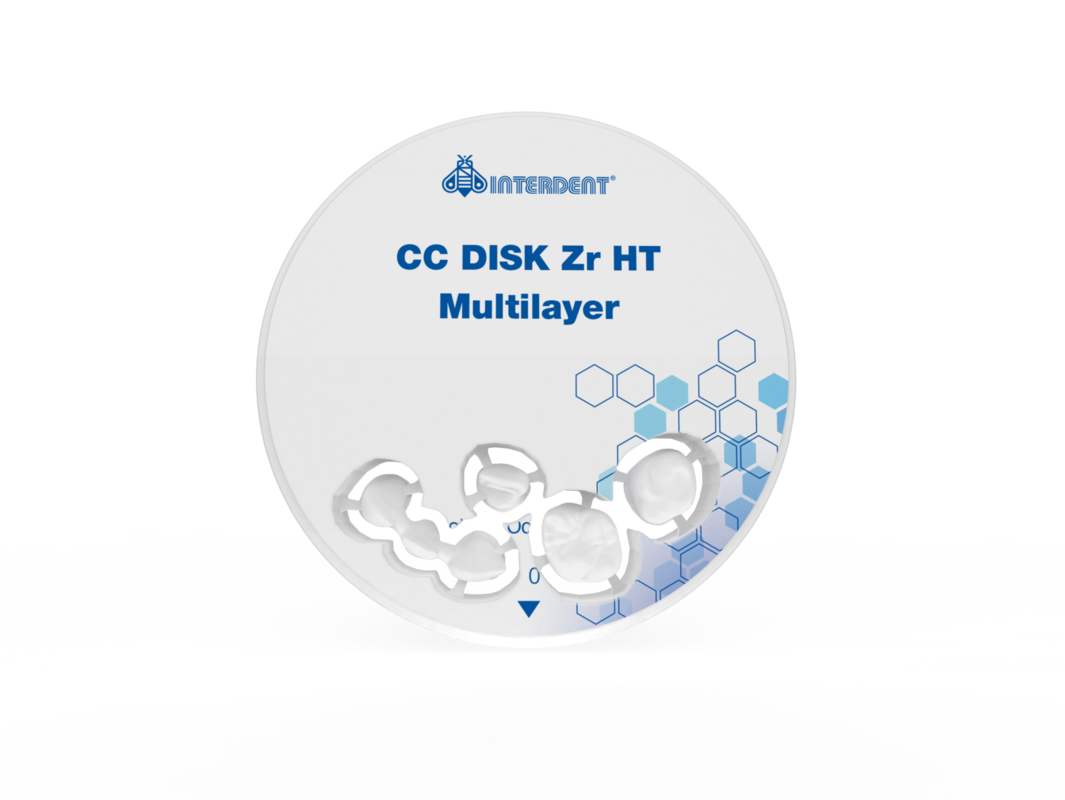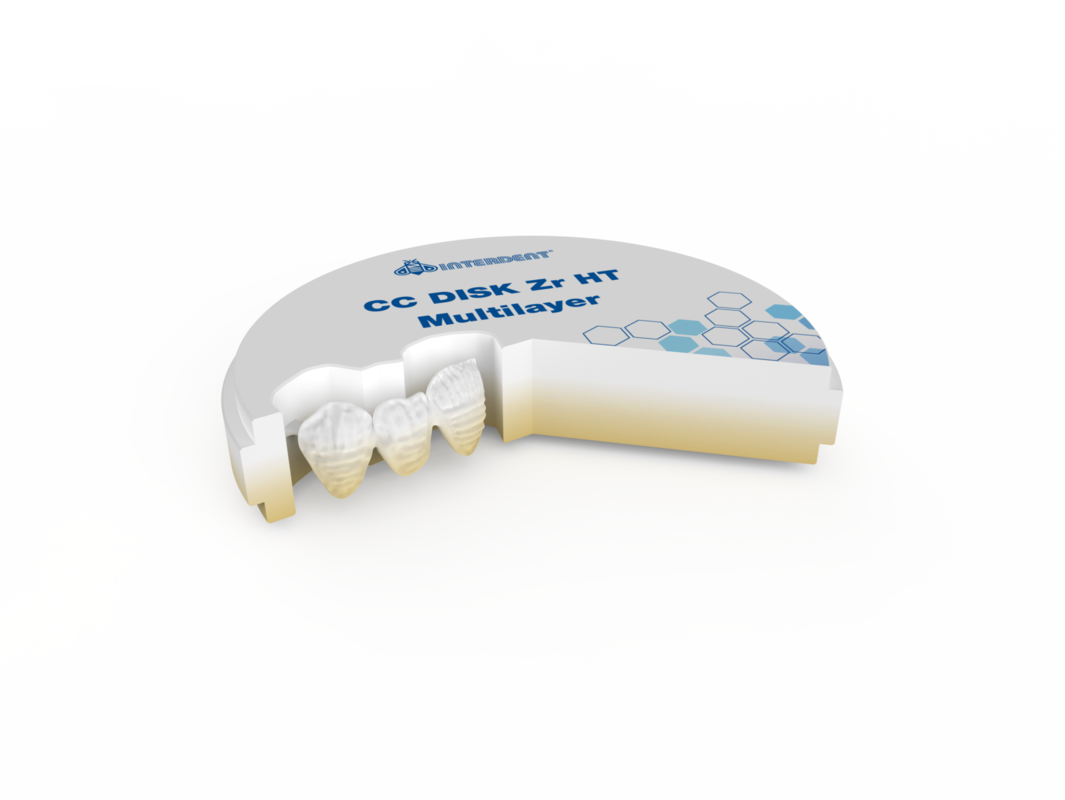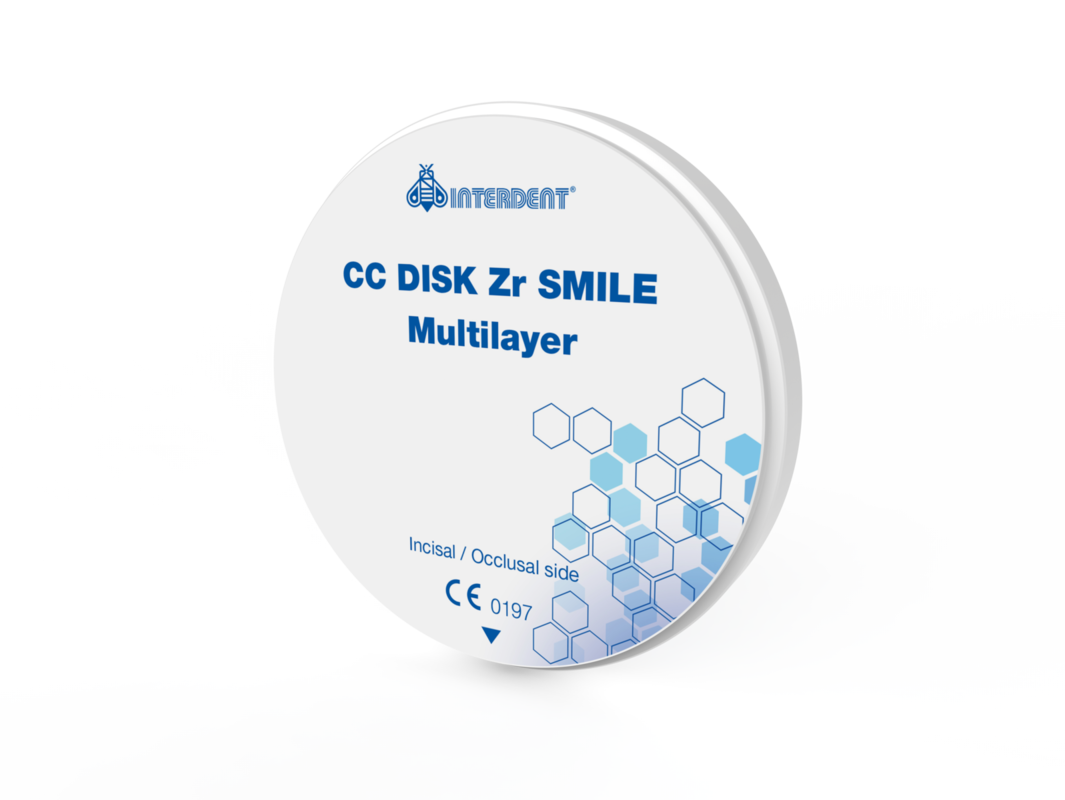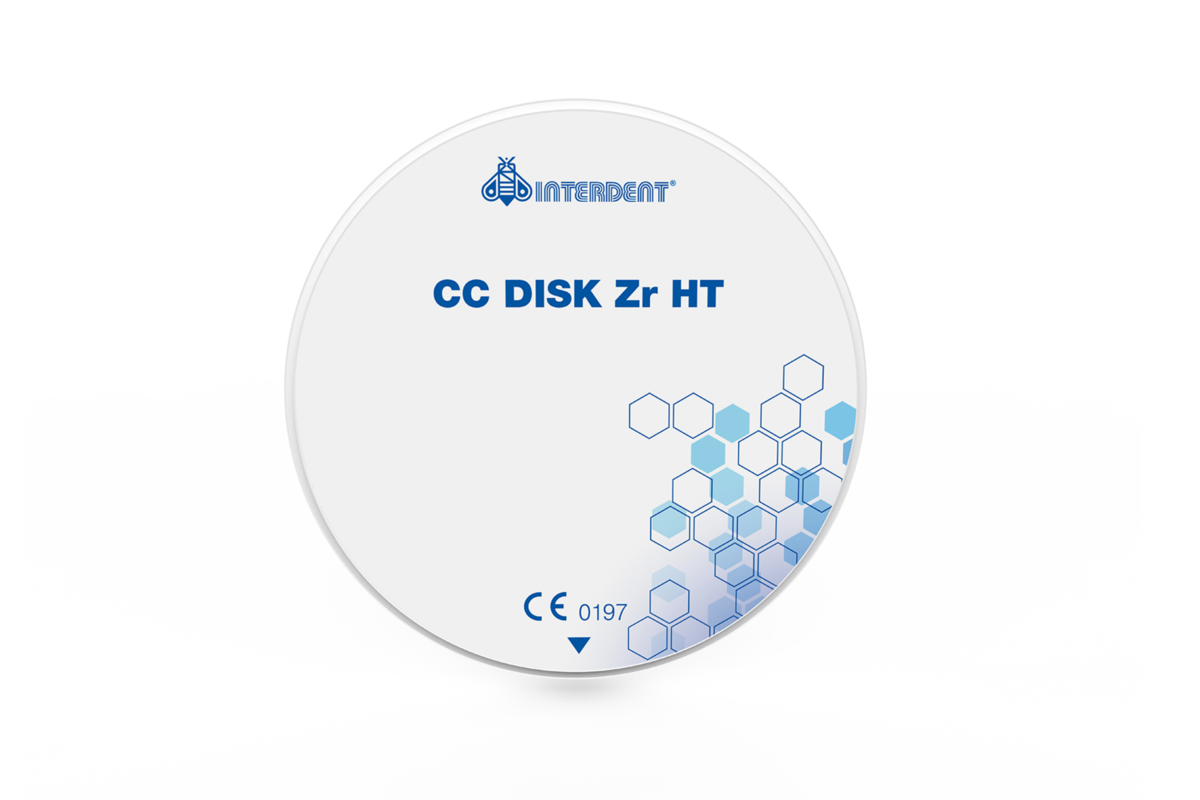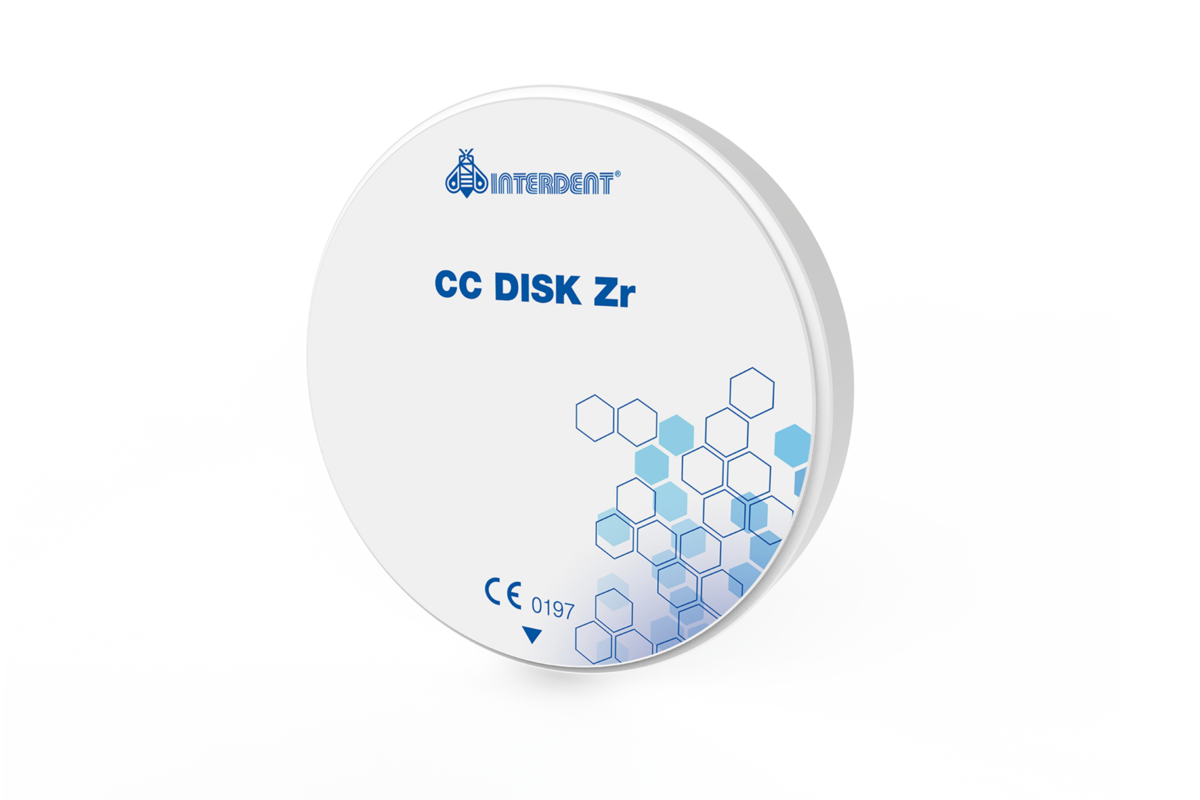ZIRCONIUM OXIDE
CC DISK Zr (white, opaque), CC DISK Zr HT (colorless, super translucent), CC DISK Zr HT Multilayer (color gradient, super translucent) are disks made of biocompatible pre-sintered zirconia stabilized with yttrium oxide. They meet the requirements of standard EN ISO 6872, type II, class 5. They are used to make the fully anatomical shape of prosthetic replacements and frames for porcelain firing (such as caps, frames and fully ceramic coatings up to a maximum of 2 pontics in the anterior and 4 pontics in the posterior area), telescopic crowns, supra-structures on bars, Maryland bridges, inlays, onlays and individual supra-structures over implants.

Contraindications: Not recommended in case of bruxism, poor tooth strength or lack of space. Neither it is not recommended in case of poor oral hygiene or lack of coordination of chewing movements. The fully anatomical shapes of prosthetic replacements and porcelain firing frames must not be used in the event of unsatisfactory preparation or in the event of a construction defect.
The minimum wall thicknesses below are the reference values:
- Posterior area: Occlusal 0.9 mm, Circular 0.5 mm
- Anterior area: Incisal / occlusal 0.7mm, Circular 0.5mm
- Bridge crowns on superstructures over implants with two links: Incisal/occlusal 1.0mm, Circular 0.7mm
Minimum bond thickness between individual links:
- Anterior bridge with one link: 7 mm2
- Anterior bridge with two links: 9 mm2
- Posterior bridge with one link: 9 mm2
- Posterior bridge with two links: 12 mm2
Shading: If necessary, the construction can be shaded in the desired color with standard paint solutions suitable for use with zirconium ceramics. To ensure uniform color, the structure must be cleaned, degreased and dried before painting. For further procedure, follow the manufacturer's instructions for zirconia paint solutions.
Ceramic veneering: You can use any ceramic suitable for veneering zirconia frames. Follow the instructions for use of the used ceramics.
CC DISK Zr SMILE Multilayer (gradient colored) are highly translucent disks made of biocompatible pre-sintered zirconia stabilized with yttrium oxide. They meet the requirements of standard EN ISO 6872, type II, class 4. They are used for the production of fully anatomical shapes and for reduced "cut-back" prosthetic replacements and frames for porcelain firing, not exceeding 3 pontics (such as caps, frames and fully ceramic coatings up to a maximum of 3 pontics in the anterior area), Maryland bridges, inlays, onlays and individual supra-structures over implants. Use for bridges in the posterior area is not recommended.
Contraindications: The use of a reduced and fuly anatomical shape of prosthetic replacements and porcelain firing frames is not recommended in case of bruxism, poor tooth strength or insufficient space. Also, its it is not recommended in case of poor oral hygiene or lack of coordination of chewing movements. Reduced and fully anatomical shapes of prosthetic replacements and porcelain firing frames must not be used in case of unsatisfactory preparation or in case of construction defects.
The minimum wall thicknesses below are the reference values:
- Posterior area: Occlusal 0.9 mm, Circular 0.5 mm
- Anterior area: Incisal/occlusal 0.7 mm, Circular 0.5 mm
- Bridge crowns on supra-structures over implants: Incisal/occlusal 1.0 mm, Circular 0.7 mm
Minimum bond thickness between individual links:
- Anterior bridge with one link: 7 mm2
Shading: If necessary, the construction can be shaded in the desired color with standard paint solutions suitable for use with zirconium ceramics. To ensure uniform color, the structure must be cleaned, degreased and dried before painting. For the further procedure, follow themanufacturer's instructions for zirconia paint solutions.
Ceramic veneering: You can use any ceramic suitable for veneering zirconia frames.Follow the instructions for use of the used ceramics.
